MYSTERY SOLVED: Spot where missing Fil-Am war memorial once stood finally found
By Macky Ramirez
(Photos by the author and the Philippine-American War Facebook group and filipinoamericanwar.com, used with permission.)
THE MYSTERY of the missing monument to an important episode in the Philippine –American War is finally solved. The memorial marking the spot where one US infantry officer was killed in action in a fierce fire fight between American and Filipino forces on the morning of November 11, 1899, thought to have been lost forever, was finally found in San Jacinto, Pangasinan.
For years, historians were stumped as to what became of the memorial that was dedicated to the memory of Major John A. Logan Jr. of the Thirty-third US Volunteer Infantry. The Logan Memorial Cannon was erected in 1905 to mark the location where the officer was mortally wounded by a sniper belonging to Filipino forces under the command of General Manuel Tinio. It featured a captured cannon mounted on a concrete base.
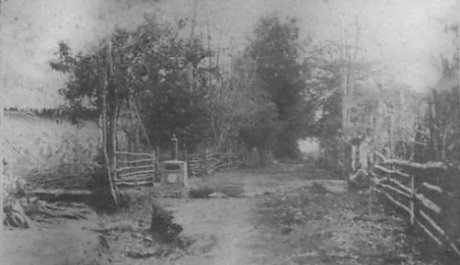
Monument marking the spot where Maj. John H. Logan was killed at San Jacinto. This photo was sent to his mother by Maj. Gen. Leonard Wood, then Governor-General of the Philippines (1921-1927).
The memorial was thought to have been swallowed by the ground and disappeared over time. However, on December 28, 2018 the place where the Logan Memorial Cannon once stood and some parts of it was finally located and discovered.
Albeit missing the most integral part, which is the cannon; this blogger along with several colleagues* were able to locate what remains of the memorial inside a family yard with piles of firewood stacked above it.
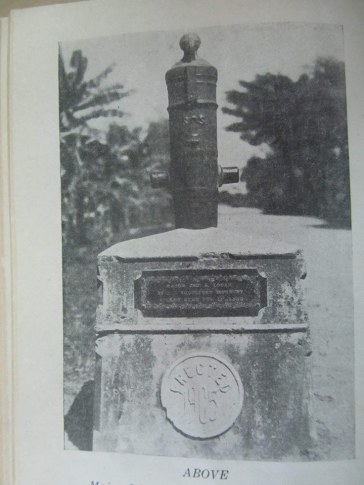
The original Logan Memorial Cannon up close.
We pinpointed the exact spot where it was erected over a hundred years ago and was able to find what remains of it in Barangay Macayug along the San Fabian-San Jacinto Road. Only pieces of the Memorial Cannon’s original concrete base survived. Locals say the steel plate containing Major Logan’s information might still be there being kept in a house somewhere in the village.
We spoke with the Barangay Captain, old folks and locals in the area and learned that the Logan cannon were unceremoniously spirited away by armed men who were reportedly in search of treasures of some sort, one night in the early eighties.
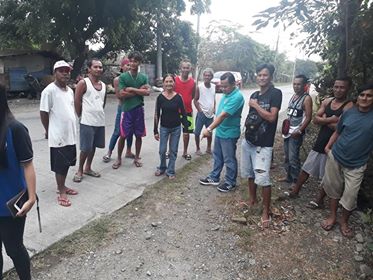
Locals remember playing at the Logan Memorial Cannon during their childhood days, but they have apparently lost memory of what transpired there 119 years ago.
When we narrated to them the events on what happened there on that day, one middle-aged resident exclaimed: “Tama pala ‘yung kwento ng matatanda. May nabaril dito na Amerikanong sundalo. Pero ang sabi, sundalong Hapon ang bumaril!”
I was jolted when the thought struck me. Lost along with the monument is the memory not only that of Major Logan’s, but more so that of the gallant Filipino forces under the Tinio Brigade who fought to their deaths in the defense of our Motherland.
A moment of eerie silence followed after I explained to them that a total of 134 Filipinos were killed there in that rainy morning of November 11, 1899. I told them that these brave kababayans of ours, in the face of the enemy’s Gattling Guns and massive firepower, put up a heroic stand against the formidable American juggernaut.

An American gattling gun on the beach of San Fabian.
Though the Filipinos eventually retreated after a fierce gun battle which raged for more than two hours, the fighting which came to be known in the annals of the Philippine-American War History as the “Battle of San Jacinto,” remains significant to this day. This pivotal encounter signaled the paradigm shift of the Philippine Army from conventional warfare to that of guerrilla warfare. Two days after the battle, a National Council of War held in Bayambang resolved to disband the Philippine Army and ordered the generals and their men to return to their own provinces and organize the people for general resistance by means of guerrilla warfare.
It was also in this battle that the invading American Forces may have had first taste of General Manuel Tinio, the legendary Tagalog boy-General of the Ilocanos, who took them one and a half years and more than 7,000 men to “civilize.”
Tinio and his forces were in San Jacinto on orders to block and delay the American forces pursuing General Emilio Aguinaldo.
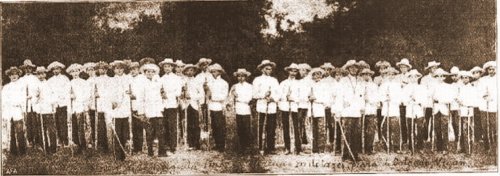
The Tinio Brigade.
The Battle of San Jacinto was dubbed by the American press as “one of the sharpest engagements of the war.” The American forces involved were from the Thirty-third Regiment US Volunteer Infantry under the command of Col. Luther R. Hare and Filipino forces under General Manuel Tinio numbering to 1,200 to 1,600.
On the afternoon of November 7, 1899, more than 2,500 American soldiers aboard six US army cruisers and gun boats descended on the shores of San Fabian in Pangasinan.
The expeditionary force commanded by Brigadier-General Loyd Wheaton was composed of Thirteenth US Infantry; Thirty-third US Infantry Volunteers; Sixth US Artillery; detachment of US Engineers; detachment of US Signal Corps and two Gattling Guns; one hundred thousand rations and a supply of 1.2 million rounds of ammunition.
It left Manila Bay on November 6th and sailed towards the Lingayen Gulf and landed on San Fabian on orders to block and prevent the Northward retreat of Emilio Aguinaldo and his army.

US gunboats bombarding San Fabian prior to landing.
Wheaton’s command was part of the “three-pronged” strategy of the US army to trap Aguinaldo with Major General Henry W. Lawton leading the charge towards the Northeast to prevent the insurgent leader from escaping through the mountains and General Arthur Mac Arthur’s forces who were well on its way advancing along the Manila-Dagupan railroad (from Angeles to Dagupan) in a frantic bid to trap Aguinaldo into the pocket created by Lawton’s and Wheaton’s forces.
At this time, Aguinaldo is in the town of Bayambang in Southern Pangasinan.
In the morning of November 11, Major Logan led the troops in the advance towards San Jacinto. During the intense fire fight which broke out along muddy fields, heavy underbrush and bamboo thickets, he was fatally shot in the head by a sharpshooter positioned atop a coconut tree. Including Logan, seven American soldiers were killed in that encounter.
Col. Hare in his field report after the battle, wrote of Logan’s death: “Volumes might be written, but in the end could add nothing which would more clearly establish the gallantry of this officer.”
Brig. Gen. Wheaton also extolled Logan, saying that his conduct “was most gallant and worthy of his name,” and that “his death comes as a personal bereavement to the many in this command who knew him well.”
US President McKinley also paid tribute to the fallen soldier. In his telegram to Major Logan’s widow, he wrote: “his splendid qualities as a soldier and high courage on the fighting line have given him place among the heroic men of the war and it will be some consolation to know that he died for his country on the field of honor.”
On May 3, 1902, Major John A. Logan Jr. was posthumously awarded the Medal of Honor “for most distinguished gallantry in leading his battalion upon the entrenchments of the enemy, on which ocassion he fell mortally wounded.”
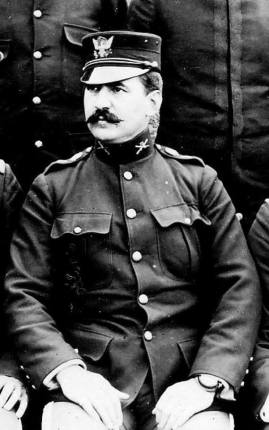
Major. John A. Logan Jr.
Logan was the son of Senator and Civil War Hero Major General John Alexander “Black Jack” Logan. Apart from his illustrious military career and distinguished service as a statesman, the elder Logan came to be known as the Father of Memorial Day in America. It was his idea to decorate with flowers the graves of American soldiers who died for their country. The US Congress formalized this observance as Memorial Day in 1871.
The General would surely turn in his grave if he knew that his own son’s memorial went missing!
The Phil-Am War Memorial Cannons
Major Logan’s Memorial Cannon in San Jacinto was among the only four (4) known Memorial Cannons erected in the country to memorialize US army officers who were killed in action at the height of the Philippine-American War.
The Memorial Cannons include that of Major General Henry W. Lawton’s, erected at San Mateo on the spot where the American General was killed by Filipino marksmen under legendary General Licerio Geronimo’s Tiradores de la Muerte on December 19, 1899. The monument was dedicated on January 24, 1903 and had a captured cannon mounted downward on a five-foot concrete base surrounded at the corners by artillery shells. The monument stands to this day at the Barangay Hall of Barangay Bagong Silangan in Quezon City, then part of San Mateo.

Lawton Memorial.
Another is that of Col. John Stotsenburg’s. He was the Commander of the 1st Nebraska Volunteer Infantry killed in action on April 23, 1899 at the Battle of Quingua, present day Plaridel in Bulacan. General Gregorio del Pilar commanded the Filipino forces in that historic battle that is being commemorated annually as a holiday in Plaridel. It also had an inverted cannon mounted on a concrete base, surrounded by four iron cannon balls placed at the corners. It still exists to this day, and in 1999, a huge mural was commissioned by the local government of Plaridel framed around the Stotsenburg memorial as a lasting tribute to the unsung Filipino fighters who were killed in that battle. The third memorial cannon was erected by the American colonial government in Malinta to honor Col. Harry Clay Egbert of the 22nd US Army “who was mortally wounded on this spot while leading his regiment, the 22nd US Infantry in an encounter in Manila on March 26, 1899.”
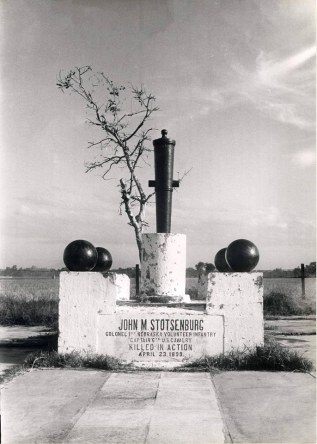
Col. Stotsenburg Memorial.
The Egbert Memorial Cannon was located originally inside a one hectare tract of land proclaimed in January 12, 1906 as the Egbert Momument Reserve by then Acting US Governor General Henry C. Ide. It featured a massive cannon mounted in the center, and flanked by large caliber artillery shells, all set on a concrete base.
Photos from the date of the dedication showed the original monument containing a sculptured bust of Col. Egbert. It is still not certain if the bust was part of the original monument or if it was only added for photographic or ceremonial purposes. If indeed it was, then it must have disappeared over time.
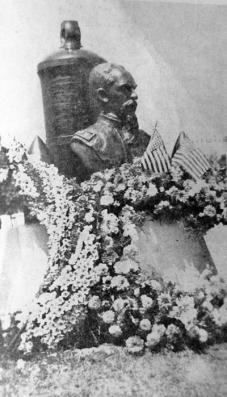
Egbert Memorial.
The Egbert Cannon was only found six years ago partly buried in the middle of a dirt basketball court inside a slum area on Flaviano street at the boundary of Barangays Karuhatan and Malinta.
News reports said the monument fell into neglect through the years. And in the 1990s, the cannon ended up being “swallowed” by the earth after treasure hunters dug a tunnel beneath it.
In 2013, the local government of Valenzuela and the National Historical Commission of the Philippines (NHCP) had the massive cannon unearthed and restored and unveiled it at the New Valenzuela City Government Complex for people to see and appreciate.
The local government of Valenzuela also passed an ordinance in 2011 recognizing March 26 of every year as Battle of Malinta Day, which it said was “a notable point in the history of Valenzuela City and a celebration of the heroism of its people.”

We must not forget
With the recent discovery of what remains of the Logan Memorial, the local government of San Jacinto in Pangasinan and the National Historical Commission of the Philippines (NHCP) must undertake steps to rebuild and restore this very important monument in our history not only for the memory of Major Logan but more importantly, to the memory of 134 Filipinos who were killed in San Jacinto on November 11, 1899.
The Battle of San Jacinto and the 134 nameless, unsung Filipinos who perished in that fateful encounter must not be forgotten. We owe it to them. We owe it our children. We owe it to our country. #
[When taking time off as a Commission on Elections employee where he serves as the national president of the Comelec Employees Union, the author is an amateur historian who says he indulges in his other passion “only when he is in the mood (Kapag ginaganahan lang.)]
Sources:
- Report of an Expedition to San Fabian, San Jacinto and Vicinity, November 5 to November 30, 1899 by Brig. Gen. Loyd Wheaton, USV, Commanding
- http://www.filipinoamericanwar.com
- Philippine-American War facebook group
- http://1-22infantry.org/
- https://www.army.mil/article/47711/battle_of_san_jacinto
* The Search Party included myself, Mac Ramirez; Gel Gerardino; Rodel Realubin and Edward Macasu. Atty. Reddy Balarbar, a native of San Fabian a town near San Jacinto, was not able to join us that day, but he was able to provide in advance a significant lead towards locating it.
